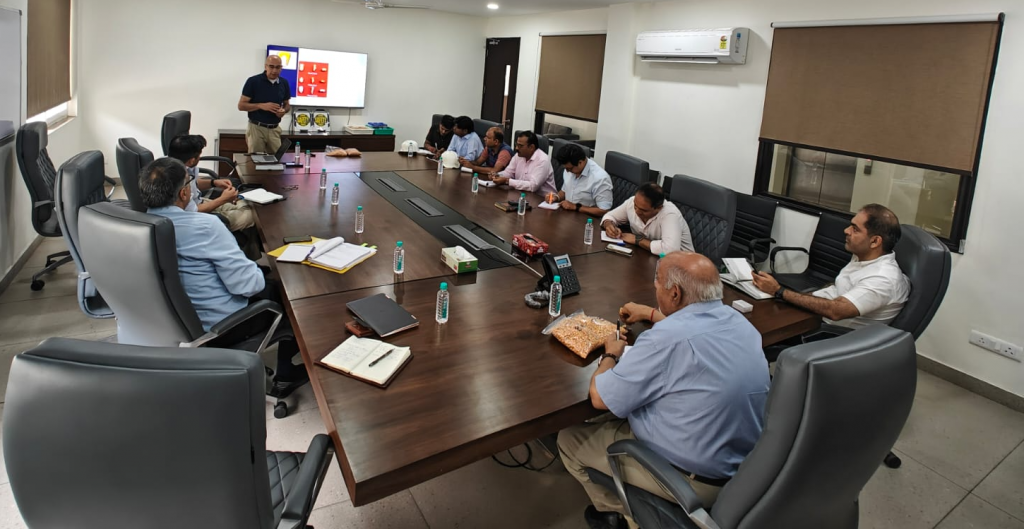U.S. Grains Council’s (USGC’s) New Delhi office recently traveled around India to meet with industrial corn starch millers to discuss U.S. corn’s superiority in starch processing. Dr. Vijay Singh, executive director of the University of Illinois’ integrated bioprocessing laboratory, joined the group to discuss Council initiatives in marketing U.S. corn to industrial starch millers around the world.
The team began the tour in Chalisgaon to conduct an audit of the largest starch plant in India. Afterwards, the team headed north to the state of Punjab, where they audited two additional starch plants. During the consultations, the team found that U.S. corn could benefit Indian starch millers via shorter steeping times and increased overall yields which translates into increasing profitability.
“Dr. Singh’s research has clearly shown that a one percent increase in yield will lead to over $1 million of increased annual profitability for plants in India,” said Kurt Shultz, USGC senior director of global strategies. “U.S. corn would give Indian starch processes three to five percent higher starch yields than Indian corn currently. Given that they currently do not have access to U.S. corn, it’s important that we bring this to the attention of Indian starch millers. They are currently operating at a competitive disadvantage to the global industry, and we are optimistic that they will advocate for access to U.S. corn with their governmental officials.”
Following the audits, the team traveled to Ahmedabad to speak with the All India Starch Manufacturers’ Association (AISMA) about the team’s findings over the week. Dr. Singh presented profitability metrics and compared them to a baseline seen in India and the U.S.
“While these are exceptionally capable businesses that have cutting-edge technology, they were surprised to see the money being left on the table,” said Reece H. Cannady, USGC regional director for South Asia. “It genuinely captured everyone’s attention when presented with ideal starch manufacturing techniques and what it could mean for their plants.”
The timing of the roadshow was perfect, as the Indian government recently announced that rice was banned for use in India’s ethanol production. This is forcing the world’s fastest-growing ethanol industry to switch to corn as a raw material for their grain ethanol plants which puts them in competition with the Indian starch industry. A periodic exporter, the Indian government’s current goal of E20 blends by 2025-2026 will push India into a major corn deficit, drastically impacting starch millers in the country.
The Council’s strategy in India involves supporting India’s E20 goals, understanding that corn will be at a deficit. To achieve their ambitious blending goals, the Indian government must make policy changes that will positively impact U.S. farmers, whether it be via fuel ethanol imports or the Indian industry’s access to GM corn.
“Starch millers are exceptionally concerned about future availability of corn, seeing a potential for a 6.0 MMT (236 million bushels) corn deficit on the horizon,” Cannady said. “Not only is U.S. corn a more profitable alternative for the Indian starch industry, but it can help both the Indian ethanol and starch industries achieve their ambitious growth goals and ensure the viability of both sectors.”
About The U.S. Grains Council
The U.S. Grains Council develops export markets for U.S. barley, corn, sorghum and related products including distiller’s dried grains with solubles (DDGS) and ethanol. With full-time presence in 28 locations, the Council operates programs in more than 50 countries and the European Union. The Council believes exports are vital to global economic development and to U.S. agriculture’s profitability. Detailed information about the Council and its programs is online at www.grains.org.

